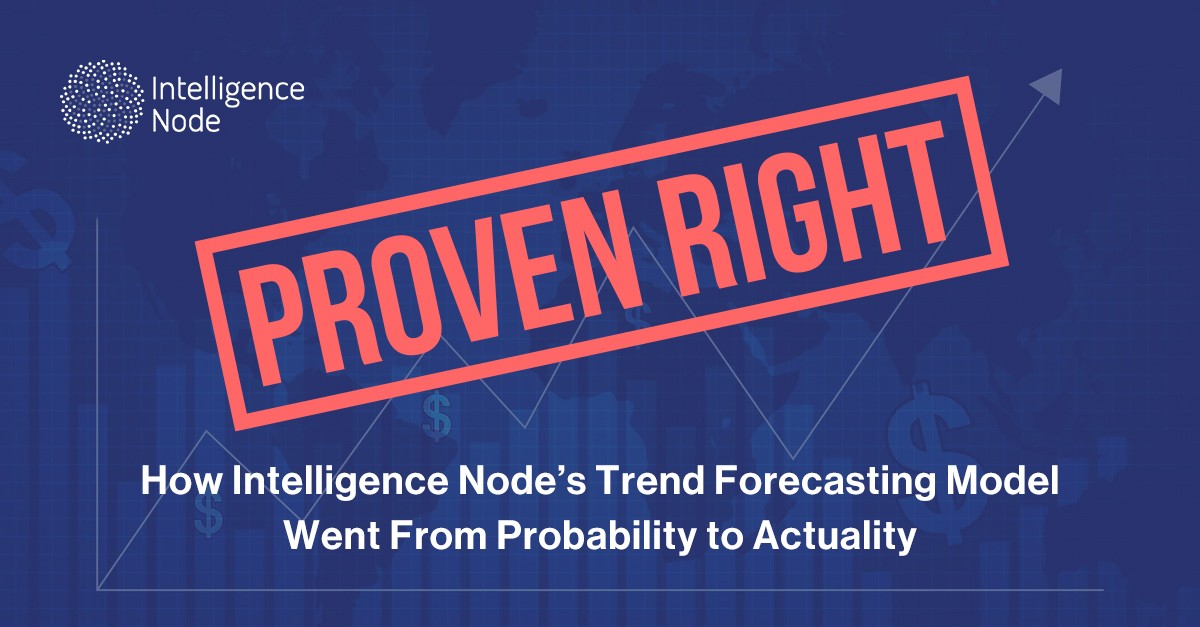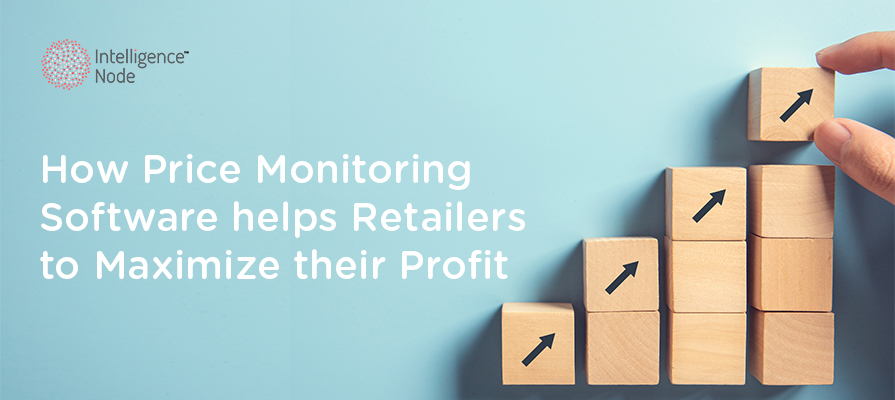2022 has been a transformative year in retail – and a changing retail landscape means retailers and brands must step up their game if they want to thrive in 2023. The year 2022 cemented the belief that eCommerce and omnichannel are the future and 2023 would be all about being flexible, consumer-centric, and fortifying retail-tech capabilities to thrive in the digital-driven retail economy. In fact, eCommerce spending is expected to reach $36 billion in 2023 – a 20% projected increase from 2022. As the masses adapt to technology, modern-day shoppers have developed a new set of expectations – and retailers must carefully consider every move they make so they can strategize accordingly. The most effective way to do so is through timely implementation of analytics and technology. In this blog post, we walk you through the top retail trends, retail investments, and retail trends for 2023 and beyond.
The following are the 8 key consumer buying behavior trends and retail tech insights that retailers need to watch out for:
1. Social Commerce will Take the Front Seat
Social commerce is already on the rise due to its convenience and non-invasive advertising. It is forecasted to reach $30.73 billion in sales in 2023, accounting for 20% of global retail eCommerce sales. 75% of retailers already sell on social media, with social storefronts and shoppable posts.
Further, influencer marketing is becoming one of the more sought-after marketing channels for eCommerce brands and retailers due to the rapid return on investment, strategic targeting of the right online audiences, and positive advertising. Customers often view influencer marketing as more trustworthy than brand messaging and are influenced to try out brands endorsed by influencers they follow: UGC videos are 22% more effective than brand videos. Many new brands launched themselves using this strategy and even bigger brands like Starbucks, Adidas, and Dunkin’ Donuts use it extensively to market to their online audiences. Influencer marketing has become essential in retail trends, especially for brands targeted at Millennials and Gen Z audiences who have a higher online presence and social media usage.

2. Personalized Experiences will Go a Long Way
60% of shoppers say they are more likely to be repeat customers when offered personalized shopping experiences and have even come to expect custom deals and promotions each time they provide data to a retail platform. Retailers understand the need for such experiences to maintain a competitive edge in the highly saturated retail space. In 2022, 74% of eCommerce companies have a website personalization program, investing in curating highly personalized experiences across critical touch points while many others are still lagging behind and just starting to understand and explore ways to personalize experiences. Retail trends show that 89% of companies that rate their experience management strategy as better than average, report better revenue growth than competitors. The recommendation engine market size is projected to hit $12 billion by 2025.
The stats say it all: personalized shopping experiences are no longer a cherry on top, but a vital component of any eCommerce experience. As technology and analytics capabilities evolve, retailers lagging behind in personalization will be playing catch up in 2023, to create equally compelling experiences on their channels.
3. Reviews and Ratings will Gain Importance
In a LinkedIn poll carried out by Intelligence Node, 41% of respondents specified that they found consumer reviews and ratings the most important factor while making a purchase online, while, in comparison, low prices were deemed the most important only by 20% of the same group of respondents. Research suggests that 3D views of products generate 50% more engagement than static imagery: and key features such as zoom, 360 views, AR try-on capabilities, detailed descriptions as well as robust review sections have become critical to the modern-day shopper. According to a survey by Ogilvy, 80% of Gen Z customers claimed to change their mind about a purchase after reading negative reviews.
Furthermore, with retail trends skewing towards digital, to rank on the digital shelf, one of the critical factors is reviews and ratings. A large number of bad reviews or the lack of consumer reviews can negatively impact your digital shelf rankings and can hinder your chances of appearing on the first page of search results. Hence, optimizing your websites for consumer reviews and incorporating consumer reviews and sentiment into your product and marketing strategy will be crucial to improving brand integrity and conversions in 2023.
4. Circular Economy will Gain Momentum
Stemming from today’s socially conscious customer psyche comes the concept of recommerce, or the circular economy. 52% of consumers today value increased sustainability efforts from brands, an effect of the pandemic’s forced changes in buying habits. What has always been a linear economy in retail, where raw materials are transformed into products and disposed of once used, is a large cause of wastage and carbon emissions. In a circular economy, products and raw materials are reused, recycled, and upcycled, and are ethically and locally sourced to make the entire business model sustainable – leading to reduced wastage and carbon footprint.
65% of shoppers use resale or ‘recommerce’ services, especially in fashion retail. According to the National Association of Resale and Thrift Shops, 16-18% of Americans opt to shop at thrift stores in a given year. In the furnishing segment, the hashtag “#furnitureflip” garnered 4.6 billion views, growing 23% in 2022 compared to the previous year. Roughly 30% of major retailers are involved with resale services and home improvement brands that catered to DIY enthusiasts grew 14% YoY.
5. The Metaverse will Create Waves
With the global launch of the metaverse in 2022, retailers have arrived in swarms – investing in virtual real estate, experimenting with new marketing strategies, and creating new spaces to engage with young, Gen Z, tech-savvy consumers. Already, 74% of adults in the USA are willing to spend up to $1000 on VR gear to join the metaverse- similarly, global spending on AR/VR is set to rise to $72.8 billion in 2024. Today, however, 51% of all metaverse users are 13 years old if not younger, indicating a unique window of opportunity to begin to identify and shape audiences for brands in the future.
Luxury brands and high-end retailers have been the first to capitalize on the seedling opportunity the metaverse represents, disrupting the space with innovative campaigns and collaborations, gaining massive traction, and making headlines outside the metaverse as well. The future looks bright for the metaverse: The metaverse market is predicted to hit over $800 billion in 2024 – a compound annual growth rate (CAGR) of more than 13%. And with 400 million monthly active users in 2022, it has already been predicted that we are approaching times when 25% of people will spend an hour or more on the metaverse every day (as soon as 2026).
6. Direct-to-Consumer (DTC) Businesses will Flourish
As customer expectations are at an all-time high, it’s no surprise that their preference to buy from direct-to-consumer brands has increased as well – 23% of consumers claim DTC channels offer better quality products. A DTC brand owns the entire relationship with a consumer; from sales, distribution, and marketing. This allows DTC brands to forge better, more personalized relationships with shoppers, follow closely along retail trends, and use their data to offer customized and meaningful experiences, which today’s consumers hold in high regard. 61% of shoppers claim DTC companies offer the best personalized and engaging digital experiences compared to marketplaces and third-party channels.
From the brands’ perspective, DTC channels have gained popularity as they help increase profits by cutting distributor and middle-men expenditures, and have complete ownership of consumer data enabling them to develop long-term relationships with customers. It also eliminates the problems of MAP (minimum advertised price) violations, counterfeit product sales, and distorted brand image, as brands have complete control of the production, distribution, pricing, and marketing of their products.
7. Private Label Brands will Continue to Grow
In recent years, private label brands have increased substantially in number to cater to the increasing demand from customers. While previously private label products were looked down upon as substandard or cheaper alternatives, that is no longer the case. Without the marketing costs usually borne by their counterpart branded products, private label brands today have the potential to be on-trend, affordable, and competitive and are fast being adopted across major retailers.
Shoppers too are more open to private label brands and often prefer these over established brands for more than one reason. While the pandemic pushed shoppers to buy any brand they could grab, consumers found themselves re-purchasing private labels due to price sensitivity and increased familiarity with the products: a trend that continues to prevail in 2022, and potentially much beyond. While 45% of respondents said price was a critical reason for switching to private labels, 58% are now of the opinion that private labels are a fine alternative to national brands, and 70% feel they provide similar or even better quality.
8. The Adoption of Analytics and AI-driven Retail Tech will Increase
Today’s customers are spoiled for choice and have thousands of brands and retailers to choose from for any product. This in turn has heightened their expectations from retailers and offering a good product alone is no longer enough to convert these evolved shoppers or make them your loyal customers. From seamless checkouts, price matching, and highly engaging content to timely delivery and returns, and personalized experiences – customers expect seamless, hassle-free, and customized experiences across every channel.
To offer these elevated experiences is no easy feat. Retailers need to monitor customer data, analyze market and shopper trends, optimize prices based on competitor price movements, rank high on digital shelves, streamline delivery and fulfillment, and manage a host of other factors to reel in customers and retain them – and this is where AI and automation come into the picture.
How Retailers can be Ready for 2023
Without technology and innovation, retailers won’t last long in 2023. Technology is the backbone of the new retail landscape and the pandemic has proved it. The following are some areas of retail where brands and retailers can harness next-gen technology and innovative best practices to win in 2023 and beyond:
Implement a Competitive Pricing Strategy
Price is one of the primary factors a shopper considers before making the purchase decision. You don’t want to lose out on your hyper-aware shoppers. Instead, you can make intelligent pricing decisions using AI-automated pricing solutions that give you real-time feedback into market movements and competitor prices so you can price your product competitively without compromising on your margins. As the pandemic has deterred some people from spending as freely as before, intelligent pricing is key to converting price-sensitive shoppers into loyal customers.
Invest in Robust Supply Chain Management
According to recent studies of retail trends, companies with free shipping have a 20% higher conversion rate than those without. In fact, 78% of Amazon Prime members say they chose to sign up specifically to avail free shipping- undoubtedly proving free shipping to be a top priority for shoppers. To meet this demand of customers, retailers need to re-think their supply chain management. You need to automate your supply chain management and partner with only those delivery fulfillment vendors who can handle increasing volume of orders. As eCommerce is booming, more people will turn to ordering online which means timely delivery and fulfillment will be critical to any retailer’s success. Without this, you will be losing your customers to your competition in this highly competitive era.
Revisit Your MAP Monitoring Policy
As counterfeiting products are seeping into the market from everywhere, and unauthorized sellers are selling gray-market goods unchecked, a robust MAP monitoring solution has become the need of the hour. it is becoming impossible to know who is selling your products and how. But you can be on top of the game by opting for a MAP monitoring solution. With this solution, you can protect your business so that no reseller can violate the MAP terms you have agreed upon. An AI-driven MAP monitoring solution that can monitor your products is essential.
Offer a Seamless Omnichannel Experience
The pandemic might have put a full stop to many brick-and-mortar businesses but not for those who were flexible and pivoted to retail trends and created an omnichannel approach during these trying times. With an omnichannel approach, retailers can use their in-store space to fulfill online orders and provide a unified, seamless customer experience across all touchpoints. From BOPIS and curb-side pick-up to ordering online and offering free delivery, an omnichannel approach can help you reach out to a wider customer base and cater to them wherever they are.
Create Winning In-store and Online Assortments
Today’s customers have access to multiple channels, websites, search engines, and a host of data to choose from. To convert this informed shopper takes more than just low prices or discounts. You need diverse product assortments for consumers to choose from and need to keep evaluating your merchandise based on consumer preferences, competitor offerings, and shopping trends. Instead of keeping the same assortments online as well as in-store, study your consumer demographics and patterns and curate your assortments to meet the consumer demand across each channel.
Final Word
The 2023 retail trends and predictions show how much consumer behavior is evolving rapidly. Innovation, flexibility, and close attention to shopper expectations are the only way for retailers to sustain and thrive in 2023 after an arduous pandemic-riddled era. This is possible with the help of smart, intuitive AI and retail-tech solutions and a consumer-centric, digital-first retail strategy that aligns with your goals while future-proofing your business.
For more retail trends and insights into overcoming barriers to innovation and integration of tech into key retail strategies for 2023 and beyond, check out our webinar, “In Commerce Conversations: Overcoming Barriers to Retail Innovation”.




